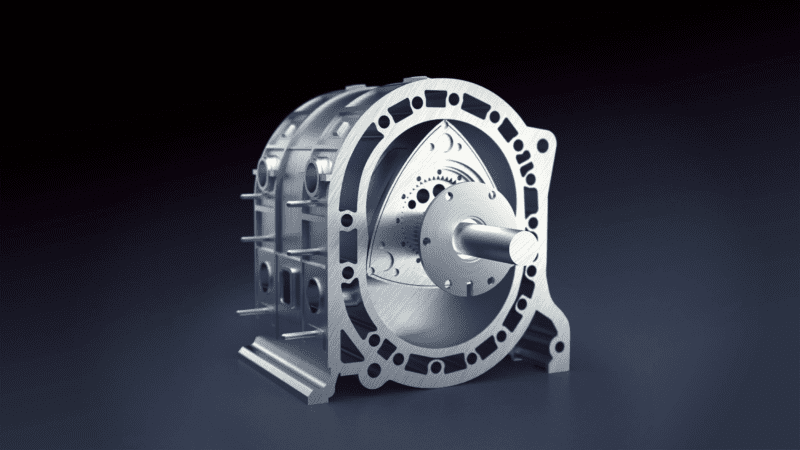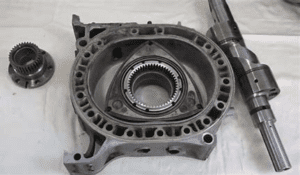Wankel Engine working

History
The Wankel engine is also known as the rotary engine. It is a type of internal combustion engine that uses a rotor instead of pistons for combustion strokes. It was invented by scientist Felix Wankel in 1954. It has been used in various cars, motorcycles, and even aircraft. In this article, we will discuss how the Wankel engine works and its advantages.
The Wankel engine works by using a rotor that rotates around an eccentric shaft inside an oval-shaped housing. The rotor has three curved sides that form a triangular shape. The housing has a central combustion chamber that is divided into three chambers by the rotor. As the rotor rotates around the eccentric shaft, it moves closer and farther away from the walls of the housing, which changes the volume of the three chambers.

Stages of Combustion
The Wankel engine has three stages: intake, compression, and power. During the intake stage, the rotor moves in a counterclockwise direction and draws in the air-fuel mixture into the first chamber through the intake port. The rotor then moves to the compression stage, where it moves in a clockwise direction and compresses the air-fuel mixture in the first chamber.
In the power stage, the rotor moves in a counterclockwise direction again and ignites the compressed air-fuel mixture, which creates an explosion that drives the rotor around the eccentric shaft. The rotor then moves to the exhaust stage, where it moves in a clockwise direction and pushes out the exhaust gases through the exhaust port.
The Wankel engine has several advantages over traditional piston engines. First, it is much lighter and smaller than a comparable piston engine, which makes it ideal for use in small cars and aircraft. Second, it has a higher power-to-weight ratio than a piston engine, which means it can produce more power for its size. Third, it has fewer moving parts than a piston engine, which means it is less prone to mechanical failure and requires less maintenance. Finally, it has a smoother and more even power delivery than a piston engine, which makes it more pleasant to drive.
However, the Wankel engine also has some disadvantages. One of the biggest is that it is less efficient than a piston engine, which means it consumes more fuel for the same amount of power. This is because it has a higher surface-to-volume ratio than a piston engine, which means it loses more heat to the walls of the housing. Second, it has a lower torque output than a piston engine, which means it may not be suitable for heavy-duty applications. Finally, it has higher emissions than a piston engine, which means it may not meet current environmental regulations.

Summary
the Wankel engine is a unique and innovative design that offers several advantages over traditional piston engines. Its simple design and smooth power delivery make it ideal for use in small cars and aircraft. However, its lower efficiency and torque output may limit its use in heavy-duty applications. Despite its disadvantages, the Wankel engine remains an important engineering achievement that continues to be used in a variety of applications.
read more about: 5 Cars With Wankel Engine / Rotary Engine – TheAutoEngineer.com
